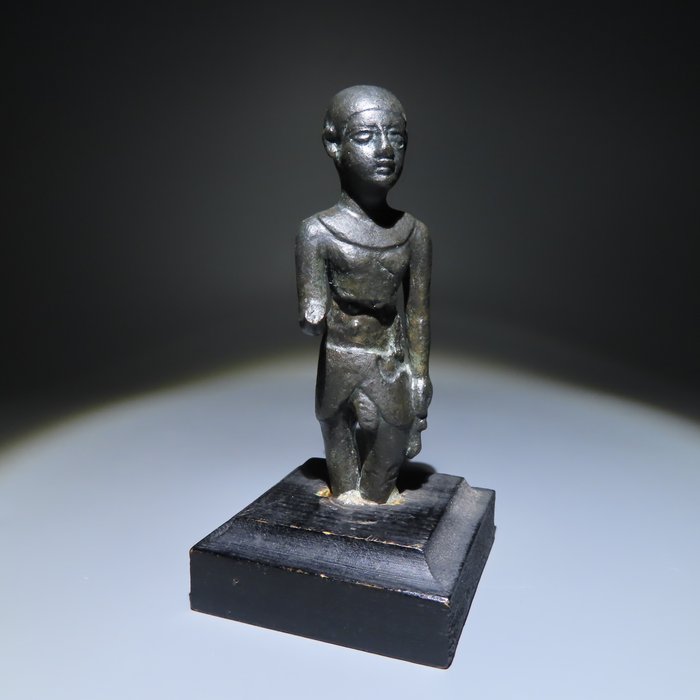
古埃及 青銅色 歐西里斯神。晚期,西元前 664 - 332 年。 15 公分高。
編號 81886701

編號 81886701

Priest figure with ankh.
Ancient Egypt, Late Period, 664 – 332 B.C.
Bronze.
12 cm heigth with stand, 9.5 cm height.
Condition: Good condition.
Provenance: Private collection, Germany, 1950 - 1960.
Priests worked at the temples, conducting the daily rituals of clothing, feeding and putting to bed the sculpted images that represented the the deities to whom the temples were dedicated. The innermost sanctuary of the temple was regarded as the bedroom of the god or goddess, where his or her domestic needs were taken care of. In mortuary temples, priests conducted similar ceremonies to nourish the ka (soul-spirit) of a deceased pharaoh or noble. The priests shaved their heads and body hair, and washed their bodies twice daily as a ritual act of purification. They wore gowns or kilts of pure white linen.
The higher-ranking priests were called the first servants of the god. Lower-ranking ones performed various duties, such as studying and writing hieroglyph texts, teaching new recruits and performing many of the routine duties associated with the temple.
The ankh or key of life is an ancient Egyptian hieroglyphic symbol used in Egyptian art and writing to represent the word for "life", "vision", "nazar", and – by extension – as a symbol of life itself.
The ankh has a cross shape but with a teardrop-shaped loop in place of a vertical upper bar. The origins of the symbol are not known, although many hypotheses have been proposed. It was used in writing as a triliteral sign, representing a sequence of three consonants, Ꜥ-n-ḫ. This sequence was found in several Egyptian words, including the words meaning "mirror", "floral bouquet", and "life". In art the symbol often appeared as a physical object representing either life or substances such as air or water that are related to it. It was especially commonly held in the hands of ancient Egyptian deities, or being given by them to the pharaoh, to represent their power to sustain life and to revive human souls in the afterlife.
The ankh was one of the most common decorative motifs in ancient Egypt and was also used decoratively by neighbouring cultures. Coptic Christians adapted it into the crux ansata, a shape with a circular rather than oval loop, and used it as a variant of the Christian cross. The ankh came into widespread use in Western culture in the 1960s, and it is often used as a symbol of African cultural identity, Neopagan belief systems, and the goth subculture.
Notes:
- The piece includes authenticity certificate.
- The piece includes Spanish Export License (Passport for European Union) - If the piece is destined outside the European Union a substitution of the export permit should be requested, can take between 1-2 weeks maximum.
- The seller guarantees that he acquired this piece according to all national and international laws related to the ownership of cultural property. Provenance statement seen by Catawiki.